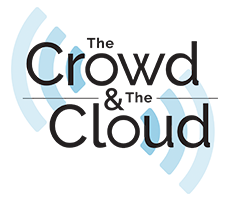
Newsletter
Sign up and stay in-the-know about The Crowd & The Cloud and the world of citizen science.


My name is Bob Allen. I'm the Assistant State Director of the Nature Conservancy in New Jersey.
Tell us a little about the horseshoe crab project?
In Southern New Jersey on the Cape May Peninsula of Delaware Bay, we're doing a horseshoe crab census. They come up on this beach every spring to lay their eggs. What we'll be doing is walking along the beach and putting out survey equipment. We use really simple PVC squares that we put down, and simply count the horseshoe crabs that are in it.

Horseshoe crab eggs on the Delaware Bay.
By doing that over and over again on a whole bunch of beaches along the Delaware Bay, we can track horseshoe crab populations. There's a number of things that are needed in order to survey for horseshoe crabs. Some surveys are done by boat, out in the bay. They're actually picking up horseshoe crabs off the bay floor and counting them that way. Once the crabs come ashore, we can use all of the people out there that are really interested in coming out and helping with this kind of work. This is where the rubber meets the road on the horseshoe crab issue, which is, "How many eggs are they laying in the sand?"
Who is performing these surveys, professional biologists or amateurs?
All of these surveys are done by volunteers, by citizen scientists. We have a couple of really dedicated volunteers who are out here most nights of the year. We also have new people who show up almost every night. Sometimes they come from close by, sometimes from quite a distance. They all come to experience the magic of being out here at night and seeing all of these ancient creatures come out of the water and lay their eggs on the sand.

The horseshoe crab species could be up to 400 million years old!
What is so interesting or important about horseshoe crabs?
Horseshoe crabs are thought to be between 350 to 400 million years old, without much change. They're older than the dinosaurs. These are truly ancient creatures, and they're still going strong today. They live on the bottom of the ocean, and most of the time we don't get to even see them. Then, they come out all at once in these huge movements, especially on new and full moons in the months of May and June, to lay their eggs. One fantastic thing about horseshoe crabs is their blood is copper-based, so their blood is actually blue. Their blood is extremely sensitive to bacteria. Horseshoe crab blood is used regularly in medical testing. They can use the blood to test the sterile nature of medicines before they're injected into the human body.
Another popular use of horseshoe crabs is to use them as bait. People capture horseshoe crabs in pretty large numbers and chop them up. They're put into traps to attract blue crabs mostly, but other kinds of fish too. So many of the horseshoe crabs were harvested in previous years, that populations started to decline.
How do the citizen science surveys help with conservation?
In the early 2000s, the shorebird populations started to really decline rapidly. It was thought that the reduction in horseshoe crab numbers and their eggs, which is the major food source for migrating birds, was probably the root cause. But there wasn't a lot of data. Right now, there's a fairly minimal amount of harvest of horseshoe crabs allowed. In New Jersey, there's no harvest of horseshoe crabs allowed at all. In order for that to be changed over time, for harvest restrictions to be lifted, we need to know that the horseshoe crabs have returned to sufficient numbers in order to support shorebird populations. The results of citizen science surveys inform decision making on whether the restrictions can be lifted or not.

Red Knot shorebirds migrate from Tierra del Fuego to the Arctic to breed, stopping in Delaware to fatten up on horseshoe crab eggs.
How are horseshoe crab and shorebird populations related?
One of the really neat things about the horseshoe crab and shorebird relationship is you don't just need some horseshoe crabs, you need lots and lots of horseshoe crabs. What happens is the horseshoe crabs come ashore and the females dig a hole above the high tide line to lay their eggs in. They're laying tens of thousands of eggs about 10 to 12 inches down into the sand. Well, shorebirds can't get their bills down that deep. The way shorebirds actually end up accessing these eggs is you need even more female horseshoe crabs to come ashore. When they're digging their holes they disturb the eggs of other horseshoe crabs, bringing those eggs to the surface which become available for birds to eat. That is the primary food source of all of these migrating shorebirds, most of which have come here from South America. They stop here until they are fat enough to make their final flight up to the Arctic tundra, where they'll breed for the summer.
Would you be able to get this data if it weren’t for citizen scientists?
The only way these kinds of surveys happen, up and down the bay, is with the help of volunteers. There's just no way that it could be covered with professionals. The volunteers do an awesome job doing these kinds of surveys, it's fantastic work. The data that these volunteers collect absolutely makes a difference to decisions that are made, in this state and surrounding states, on how to manage horseshoe crabs. Which, in turn, affects all the beautiful birds that are migrating through this area.
